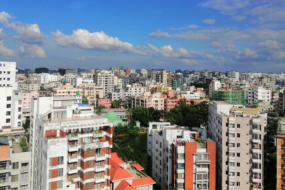Aman Deep Garg: Managing Director, Creative Design Consultants and Engineers Private Limited
When it comes to investment of our hard-earned money of life for building or buying a dream home, we sometimes get confused. It is not an easy decision for anyone as we consider many factors like location, size, cost- budget, reputation of developer, stage of construction, amenities and expected delivery time etc. While we struggle to decide on such factors of concern, certain critical aspects related to design, construction quality, materials specifications and structural safety, are missed out. It is important for us to be aware about these critical aspects while constructing home or buying a home be it under-construction or ready-to-move home.
Pre-Purchase Aspects
* Architectural Planning/ Drawings suiting the safety and functional requirements need to have details of Project Layout Plan and Floor Plans, Elevations/ sections with finishing schedule/ materials specifications.
* The Structural Safety aspects must be verified for which drawings of Foundation, Columns, Beams, Floor slabs with reinforcement steel details along with structural design basis document with salient features of structural design and safety, need to be checked.
* Waterproofing specifications, water supply, rainwater drainage schemes etc. are very important to look into. Especially as the problem of dampness and leaking water pipes is quite common, reflecting poor workmanship and technical specifications.
* Electric Power supply scheme, connection load and power points etc. along with the salient features of electric panels for safety mechanism need to be examined.
* Any special innovative technology for smart building concepts, thermal and sound insulation, sustainability etc. are also important points to be considered.
Post- Purchase Aspects
After we build/ purchase a home, as an aware customer, we need to verify the property for the following aspects:
* We must ensure that the sizes and finishes of the rooms are as per the details provided at the time of purchase.
* The flooring should be with acceptable line/ alignment and with proper joint filling. The tiles, if provided, should not have broken corners and shades should not differ.
* One should check the kitchen and bathrooms for any water leakage/ dampness at floor below.
* There should not be any crack or distress at any structural member or wall partition.
* The wall surface should be in line and plumb. The corners of the rooms should be perfectly right-angle.
* The slopes in wet areas like Kitchen, Bathrooms, Balcony and Terrace etc. should be proper to discharge the water quickly through drainage pipes. Check the drainage pipes for any blockage. Sometimes the slope of the floor is not proper or reverse due to poor workmanship and must be verified.
* The external walls and windows frame should be water-tight in the structural frame. Many a times, packing of frame or wall partition at roof beam level is not done properly, causing dampness and water inflow in home during rains. For tall buildings, door/ window and balcony railings fixing strength should be certified by a competent structural engineer for safety against the windstorm/ cyclones etc.
* The external finishing (plaster/ cladding) plays very important role in the durability of building which should be strong, whether proof, water-tight (preferably with hydrophobic coatings). There is a common problem of peeling or cracking of external plasters which shouldn’t be accepted for the reason of bad workmanship or poor material specifications.
*The building shafts (which carry services pipes like water/ sewer etc.) should be accessible at all floors and should have proper size for maintainability.
* The basements of the building towers should be well ventilated for fresh air and must be free from any dampness or cracks in any wall/ structural member. The leakages from expansion joints at basement is a very serious structural problem and need to be addressed immediately which is generally found in large development projects having combined basements for two or more building towers.
* The steps of the staircases need to be equal and should be verified. Unequal step (tread/ riser) may lead to uncomfortable movement and may cause fall of a person.
* If the building is having a Lift (for multi-storied buildings), the safety/ operational license should have been obtained and its validity certificate should be displayed in the lift.
* The durability of construction should also be the critical point for decision making. The usual service life of a building may be considered as 70-80 years or more and the construction, design elements should ensure this.
For all the points above, the buyers may look towards the actual project management systems being followed to ensure quality and timely delivery. The copy of the documents, especially the structural drawings of actual execution need to be reverified from a trustworthy Structural Engineer/ Consultant. The maintenance free service life of building is dependent on what is inside and cannot be changed later, whereas finishing/ colours and looks are like beauty makeup, which is important but can be changed over a period of time as per the trend in vogue at that time. The safety in terms of structural design and execution aspect is very important to ensure that the natural disasters like earthquake do not result in casualties due to building collapse. It is therefore advisable to always look for a safe and habitable asset with long life that gives value for money.
Mobility Monitor:
Realty set for a big Metro connectivity boost
Despite the derailment caused by the Corona pandemic, the metro rail network in the country is set for a substantial rise, in turn providing a big connectivity boost to the real estate sector.
According to the Union Housing and Urban Affairs Ministry, the current network of 740 km of metro lines in various cities is set to take a significant jump, with over 900 km of metro lines becoming operational by 2022. Besides this, another 1050 km of metro lines are under construction in 27 cities across India.
Connectivity through railways, metro lines and highways are a key to economic and real estate growth. The increasing network of metro lines will not only put real estate on a fast track but also boost the valuation. According to Hardeep Puri, Union Minister for Housing and Urban Development, an efficient urban transport system will make it possible for people to buy property or have their residence at a distance and commute easily and comfortably. This will positively impact land valuation and urban planning, benefitting urban policies.



